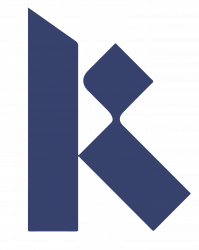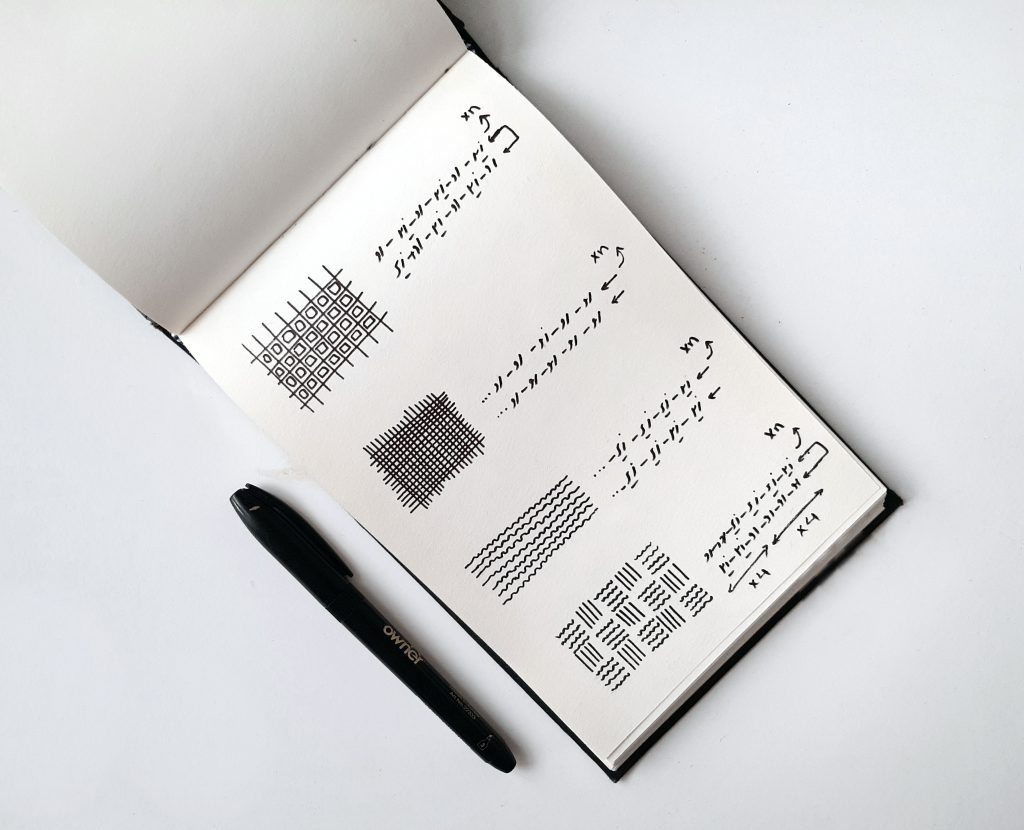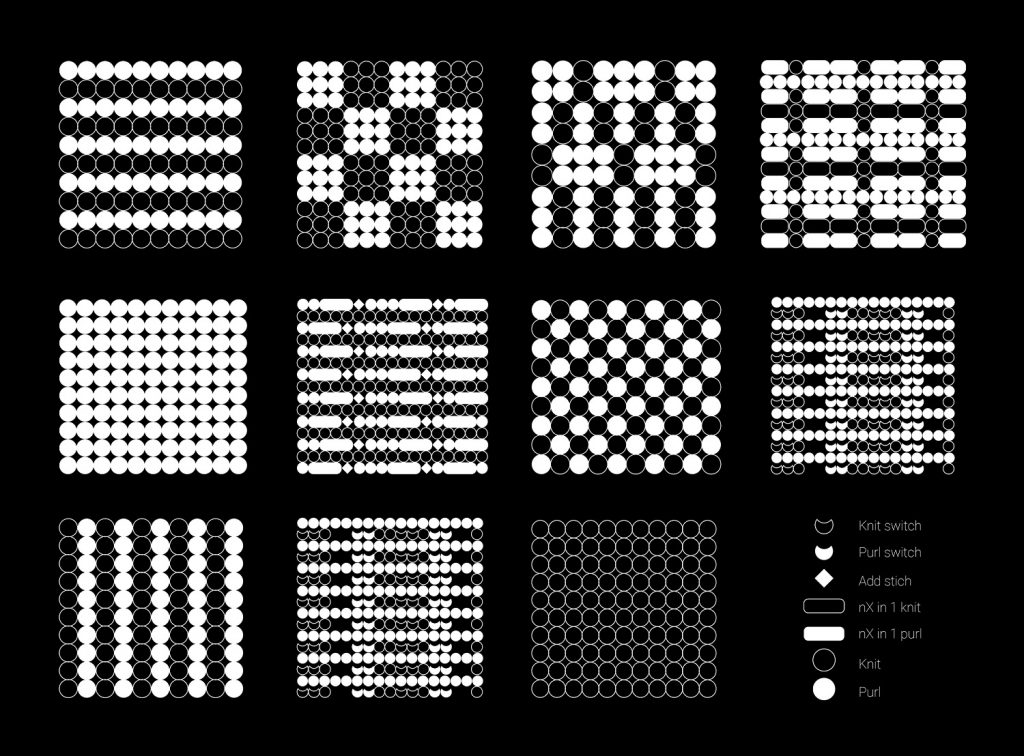Action 8 | Grad Studio I

After action 7, I continued my knitting, mainly during the five days of waiting for the election results in the united states, as I was sitting in front of the news anxiously following updates on numbers. Needless to say, this brought a lot of comfort and calmness to those anxiety-filled days and also allowed me to become more familiar with the process and the medium itself.I bought another color of yarn and tried to incorporate that into my already knitted fabric.
As I was learning the more complicated patterns from my mom, I started to write down the instruction to be able to follow along later. As I was doing this, I thought about actually creating a small archive for myself to preserve this knowledge that has been passed on from my grandma to my mom and then me.
Creating a personal archive
After I wrote down most of the pattern instructions, I instantly thought about transferring this data into the digital medium to ensure its preservation. Also, while I was writing the instructions down on paper, I was creating minimal symbols for every stitch to help me remember them later on, as opposed to writing every word down. So, when I sat behind my computer to create my digital archive, I set out to create a very simple set of icons as well, to represent different types of stitches.
These patterns represent a very small part of a vast knowledge that is close to becoming forgotten. I thought about many more areas of forgotten knowledge that we have not bothered to preserve in the modern world. How can we document, save, and pass on these forms of knowledge? Is bringing them to the digital medium a better way of preservation than the physical?
Digital archiving increases the accessibility of data but can the digital, preserve the true value of knowledge that is mainly tactile and tangible? On the other hand, the digital always relies on a medium itself.
Digital Vs. Physical data? Which can ensure the longevity of its content better?
Translating tactile data to digital data
After creating these initial sketches, I realized I was able to understand the structure of the patterns behind knitting stitches better this way. I appreciated the complexity of this craft more now. Also, I realized that I could play around with these patterns as a visual experiment to see what other forms I can create. So with that, I started working on my second set of digital sketches.
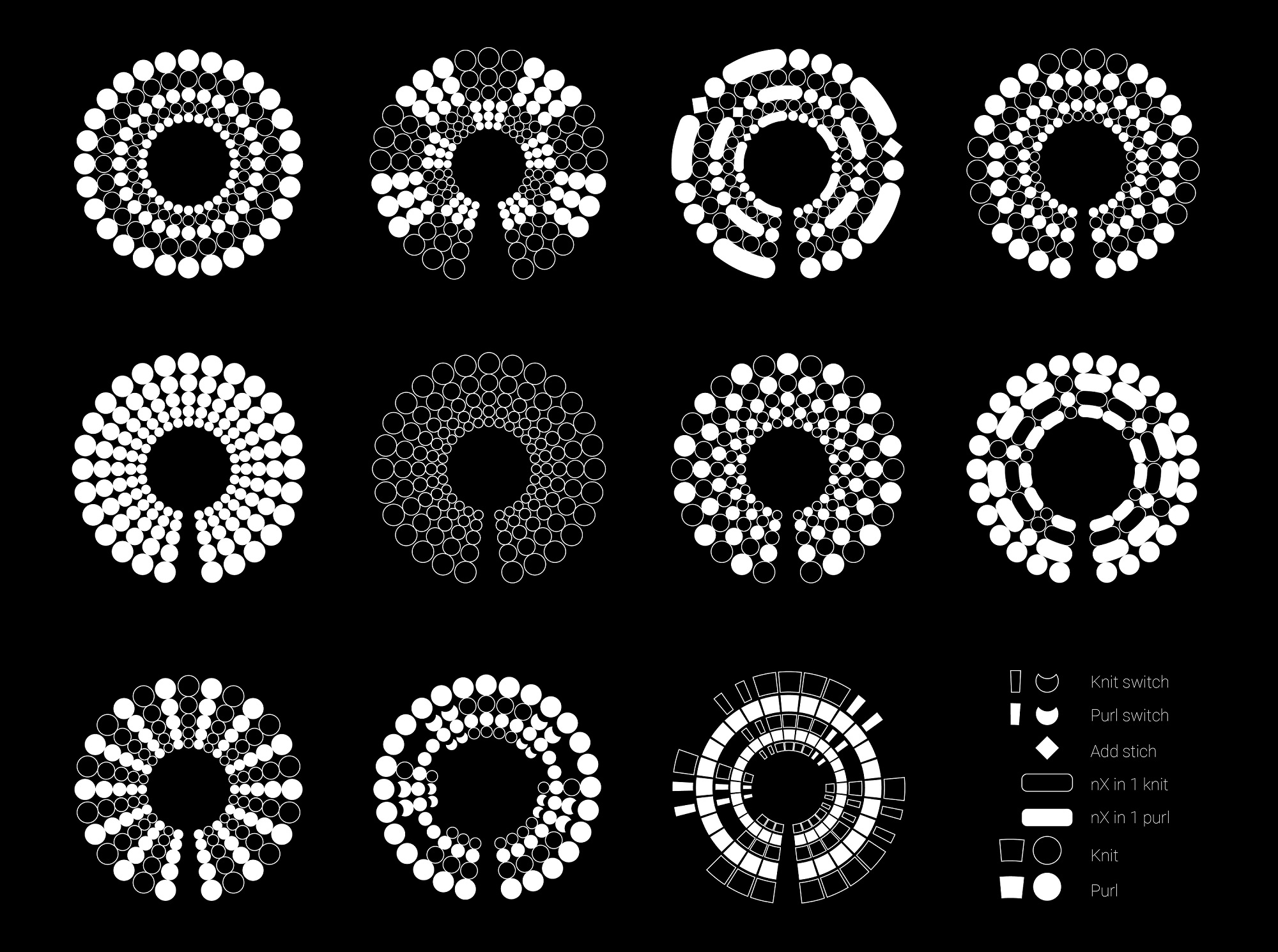
As I was creating these visuals, I was thinking and reflecting on what they mean. They were aesthetically interesting, but what else did they convey? The first thought I had was how decoding the patterns and instructions of an old and devalued form of making and translating it to a modern medium (that people are more familiar with) has revealed the hidden and intricate structures of it. Changing the medium of knitting from tactile to visual had somehow given another dimension to this craft. But when we change a work’s medium, does it necessarily retain its essence? Or does it take its own form and meaning?
Extending the visual experiment
I was very much enjoying the process of creating these visuals since the digital screen was and maybe still is my comfort zone of making. I realized that the second set of patterns I created were not exactly easy to follow. I could follow them, but I was not sure someone unfamiliar with this medium of work would be able to. My first set of instructions did that job better.
For the third experiment, I started to create something a bit more abstract and less of an actual guide (although I did not intend on creating user-friendly guides for knitting in the first place). This time, I wanted to focus on creating with as little forms and shapes as possible. But still making sure the patterns followed the pattern of the knitting stitches. Here is the third visual outcome:
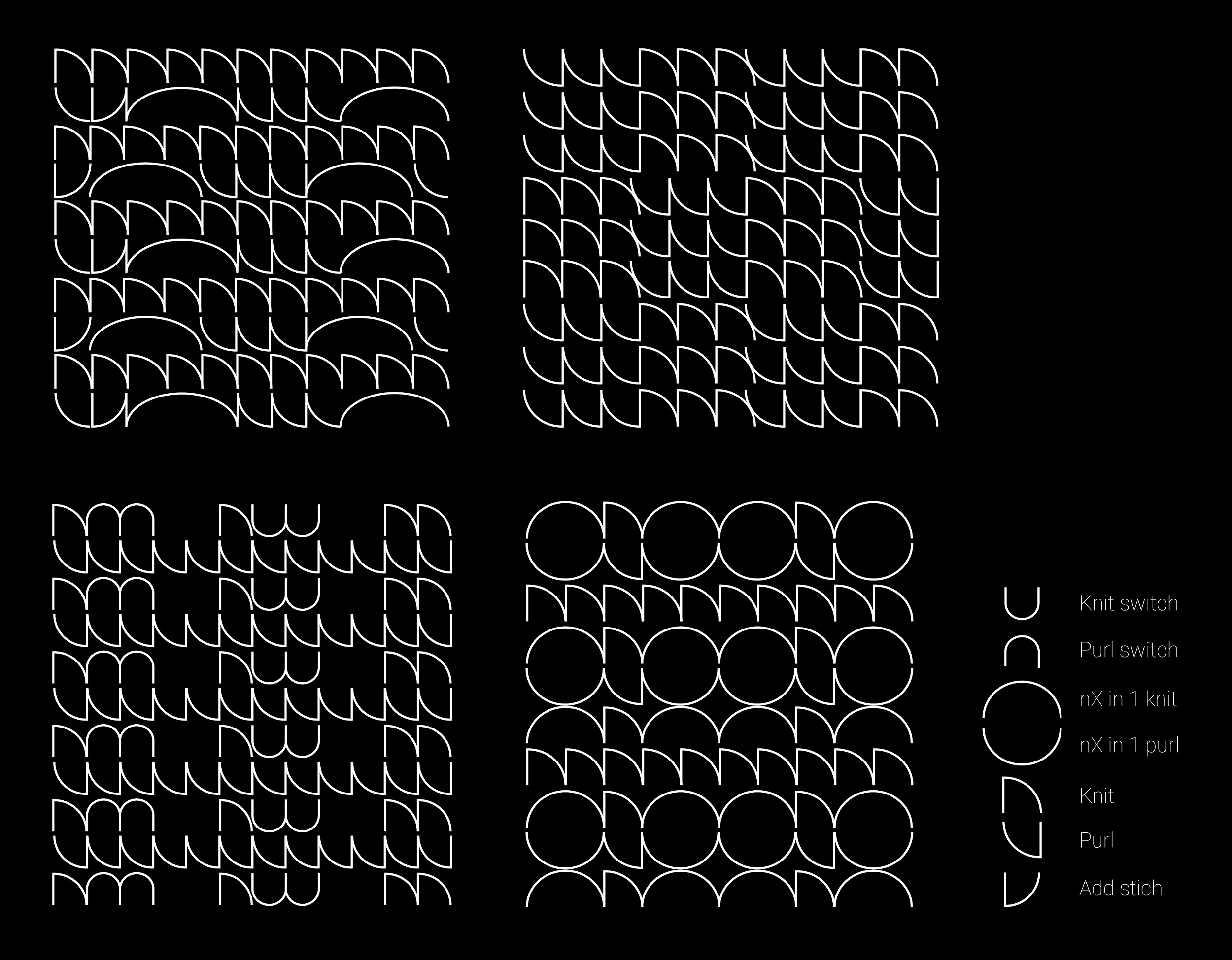
Reflections
1- Documenting forgotten knowledge:
Knitting is a small part of our traditional and cultural knowledge. A knowledge that newer generations like me (who grew up with technology) are becoming increasingly unfamiliar with. As a result, generation by generation, we are losing parts of this knowledge. We talk about preservation, but what is the best way to preserve this form of knowledge? to ensure its right documentation, accessibility, the integrity of its content, and many more aspects.
2- The Digital Dilemma:
Data exists in many shapes and forms: from tangible materials to electronic information. In today’s digital world, many people gravitate towards the digital because of easier and faster access. But when we bring something from the physical medium to the digital, we can not ensure that the values of its original form are preserved. This is especially tricky when it comes to works of art/design. Can the digital medium preserve the true value of physical data?
3- The digital dimension of knitting:
Knitting is mainly viewed as a hobby rather than a creative medium of art. By decoding knitting patterns and bringing them into a more “modern medium”, I actually could understand the complexity of it better. This ancient craft that we all associate with our grandmothers has a complicated and technical structure behind it. How could we use this form of knowledge in our designs?
P.S. Special thanks to Zahra for helping me articulate my entangled thoughts for this action!
